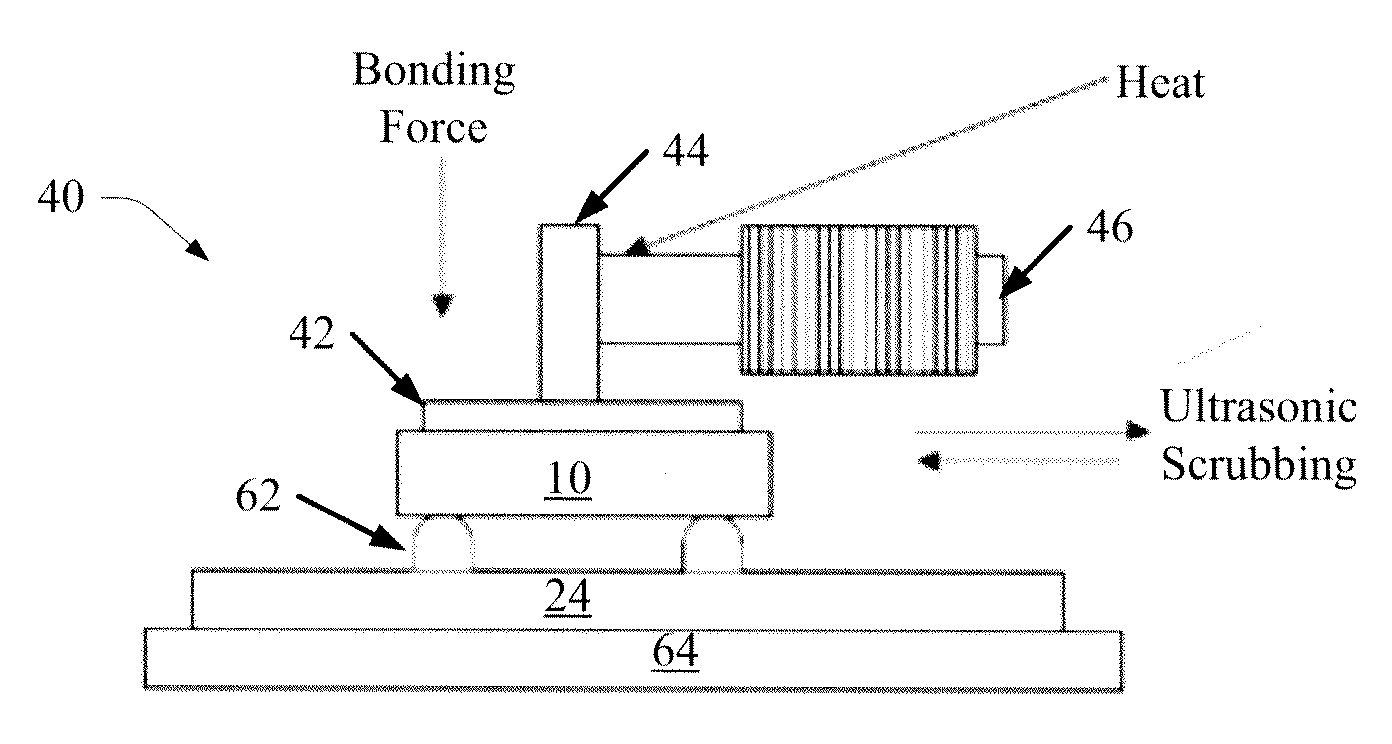Robust die bonding process for LED dies
a die-bonding, robust technology, applied in the direction of soldering apparatus, manufacturing tools,auxillary welding devices, etc., can solve the problems of low thermal conductivity of ag-filled epoxy, parasitic ag—sic shottky diode-like behavior or short circuit, and the flip-chip bonding of led vertical dies
- Summary
- Abstract
- Description
- Claims
- Application Information
AI Technical Summary
Benefits of technology
Problems solved by technology
Method used
Image
Examples
Embodiment Construction
[0015]Systems and methods are described herein, which facilitate reducing or eliminating excess die attachment material accrual and parasitic conductive paths formed in conjunction therewith by locally melting a die attachment material (e.g., solder) using a combination of localized heat sources and ultrasonic energy. The heat sources bring the die attachment material close to its melting point, which reduces an amount of bonding force required of purely ultrasonic bonding techniques. An ultrasonic transducer brings the die attachment material the rest of the way up to its melting point, which reduces the overall temperature that the die and / or sensitive components thereon endure during the bonding process.
[0016]With reference to FIG. 1, a known die structure 10 is formed of multiple layers, including an LED layer 12 that overlays a silicon carbide (SiC) layer 14. The LED layer can comprise one LED or a plurality thereof. The SiC layer 14 overlays an epitaxial layer 16, which in tur...
PUM
| Property | Measurement | Unit |
|---|---|---|
| temperature | aaaaa | aaaaa |
| temperature | aaaaa | aaaaa |
| temperature | aaaaa | aaaaa |
Abstract
Description
Claims
Application Information
 Login to View More
Login to View More - R&D
- Intellectual Property
- Life Sciences
- Materials
- Tech Scout
- Unparalleled Data Quality
- Higher Quality Content
- 60% Fewer Hallucinations
Browse by: Latest US Patents, China's latest patents, Technical Efficacy Thesaurus, Application Domain, Technology Topic, Popular Technical Reports.
© 2025 PatSnap. All rights reserved.Legal|Privacy policy|Modern Slavery Act Transparency Statement|Sitemap|About US| Contact US: help@patsnap.com



